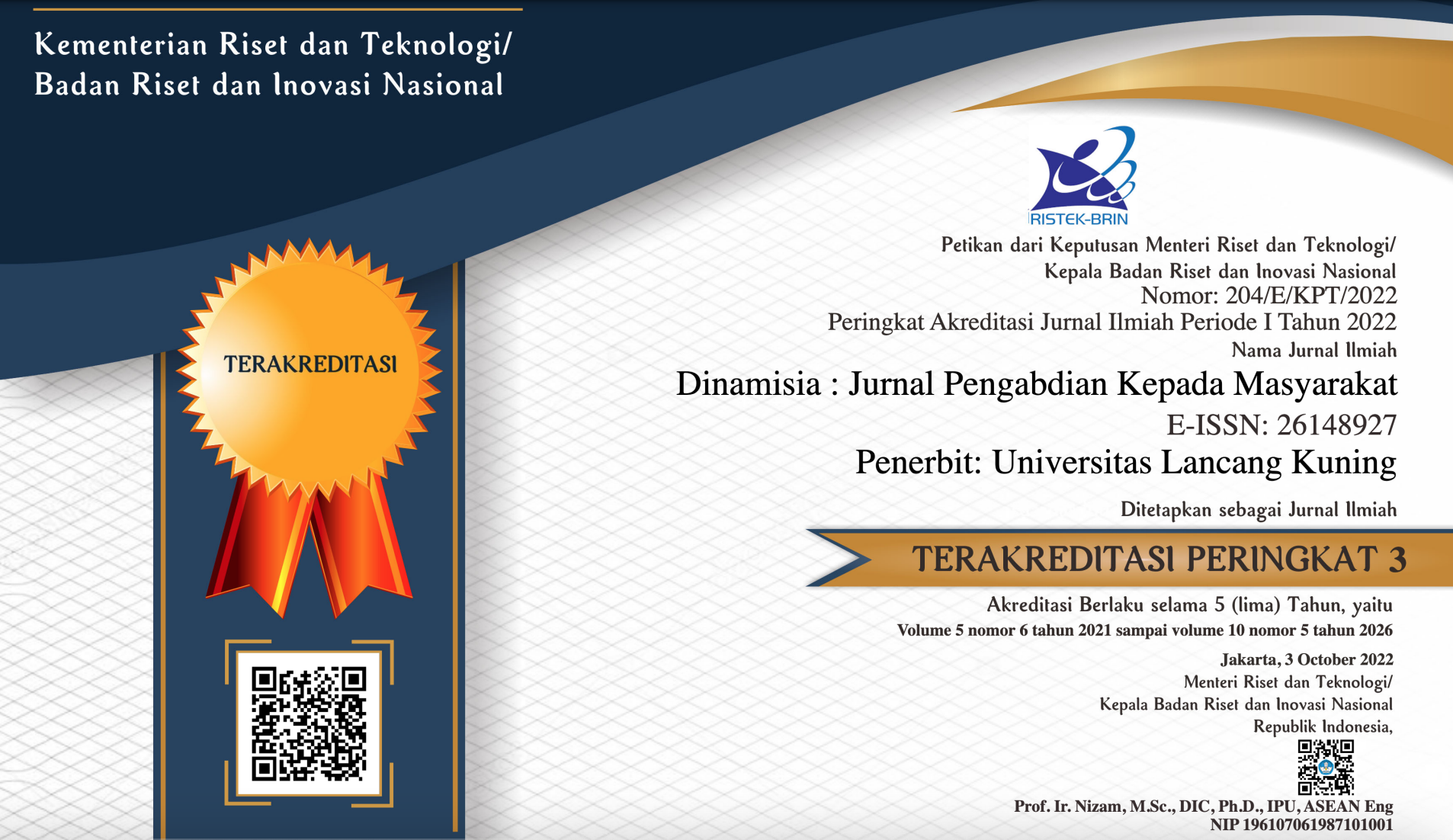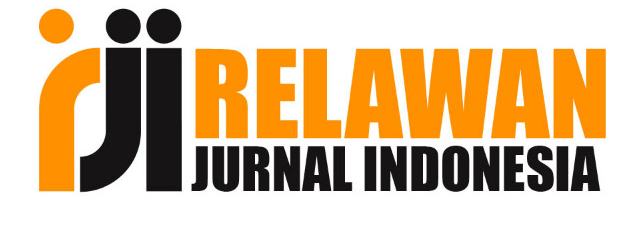Pengenalan dan Pemanfaatan Limbah Kaca Menjadi Produk Bernilai
Abstract
Glass waste is harmful if it is disposed of and mixed with other waste. A special disposal site is needed to avoid injuring the hands and feet of the garbage collectors, especially at the Final Disposal Site (TPA). Glass waste highly consists of silica (SiO2), which is needed in cement. Glass waste is crushed by a mechanical method using a crusher, creating glass powder with an average size of 54 µm. Cement is mixed with glass powder in a ratio of 4:1. Water cement factor (FAS) is used at 0.3. The partners in this community service activity are primary school-age children in Ateuk Lam Ura Village, Simpang Tiga District, and Aceh Besar District. The success of the resulting product is indicated by its compressive strength, the hardening of cement and glass powder, and the product's visual appearance without any visible pores. The product has good strength and looks neat with a solid surface. The compressive strength of the product obtained is 3.21. Partners are interested and can apply glass waste to flower pots properly.
Downloads
References
Abdurrahman, S., & Larasatai, D. (2012). Pemanfaatan limbah kaca sebagai bahan baku pengembangan produk. Jurnal Tingkat Sarjana Senirupa Dan Desain, 1(1), 1–6.
Ahmad, J., Zhou, Z., & Martínez-García, R. (2022). A study on the microstructure and durability performance of rubberized concrete with waste glass as binding material. Journal of Building Engineering, 49, 104054. https://doi.org/https://doi.org/10.1016/j.jobe.2022.104054
Alliffiantauri, A. A., & Hasyim, F. (2022). Pelatihan Pemanfaatan Sampah Plastik dan Limbah Rumah Tangga Sebagai Peluang Usaha bagi Remaja Desa Jetak Alastuwo. Transformatif: Jurnal Pengabdian Masyarakat, 3(1), 95–115.
Geng, C., Wu, X., Yao, X., Wang, C., Mei, Z., & Jiang, T. (2022). Reusing waste glass powder to improve the strength stability of cement at HTHP. Journal of Petroleum Science and Engineering, 213, 110394. https://doi.org/https://doi.org/10.1016/j.petrol.2022.110394
Handayani, L., Nurhayati, N., Rahmawati, C., & Meliyana, M. (2019). Pelatihan Pembuatan Pupuk Organik Cair (POC) dari Limbah Dapur bagi Ibu-Ibu Desa Paya Kecamatan Trienggadeng Kabupaten Pidie Jaya. Jurnal Abdimas BSI: Jurnal Pengabdian Kepada Masyarakat, 2(2), 359–365.
Ismail, Z. Z., & AL-Hashmi, E. A. (2009). Recycling of waste glass as a partial replacement for fine aggregate in concrete. Waste Management, 29(2), 655–659. https://doi.org/https://doi.org/10.1016/j.wasman.2008.08.012
Luthfianto, S., Nurkhanifah, N., & Maula, I. (2020). Inovasi Limbah Plastik dan Kulit Kopi Menjadi Paving Block di Desa Penakir Pemalang. DINAMISIA: Jurnal Pengabdian Kepada Masyarakat, 4(1), 176–185.
Putri, L. D., & Harsini, S. R. (2018). Potential of Regulation of Slum Area in The Village Meranti Pandak Pekanbaru City. International Journal of Engineering & Technology, 7(2), 466-469.
Palupi, A. P. (2019). Nilai Estetika yang Terdapat pada Limbah Kaca di Galeri Otak Atik Daerah Yogyakarta. INVENSI (Jurnal Penciptaan Dan Pengkajian Seni), 4(1), 43–52.
Rahmawati, C., Muhtadin, M., Faisal, M., Iqbal, I., Zardi, M., Meliyana, M., & Nasruddin, N. (2022). Teaching industry: Pengolahan Limbah Kaca Menjadi Produk Konstruksi. Jurnal Vokasi, 6(2), 112–119.
Susanawati, S., Rozaki, Z., & Mulyono, M. (2022). Pemanfaatan Limbah Warung Kuliner Menjadi Pupuk Organik di Pantai Depok Kabupaten Bantul. DINAMISIA: Jurnal Pengabdian Kepada Masyarakat, 6(1), 72–78.
Tahwia, A. M., Heniegal, A. M., Abdellatief, M., Tayeh, B. A., & Elrahman, M. A. (2022). Properties of ultra-high performance geopolymer concrete incorporating recycled waste glass. Case Studies in Construction Materials, 17, e01393. https://doi.org/https://doi.org/10.1016/j.cscm.2022.e01393
Topçu, İ. B., & Canbaz, M. (2004). Properties of concrete containing waste glass. Cement and Concrete Research, 34(2), 267–274. https://doi.org/https://doi.org/10.1016/j.cemconres.2003.07.003



















